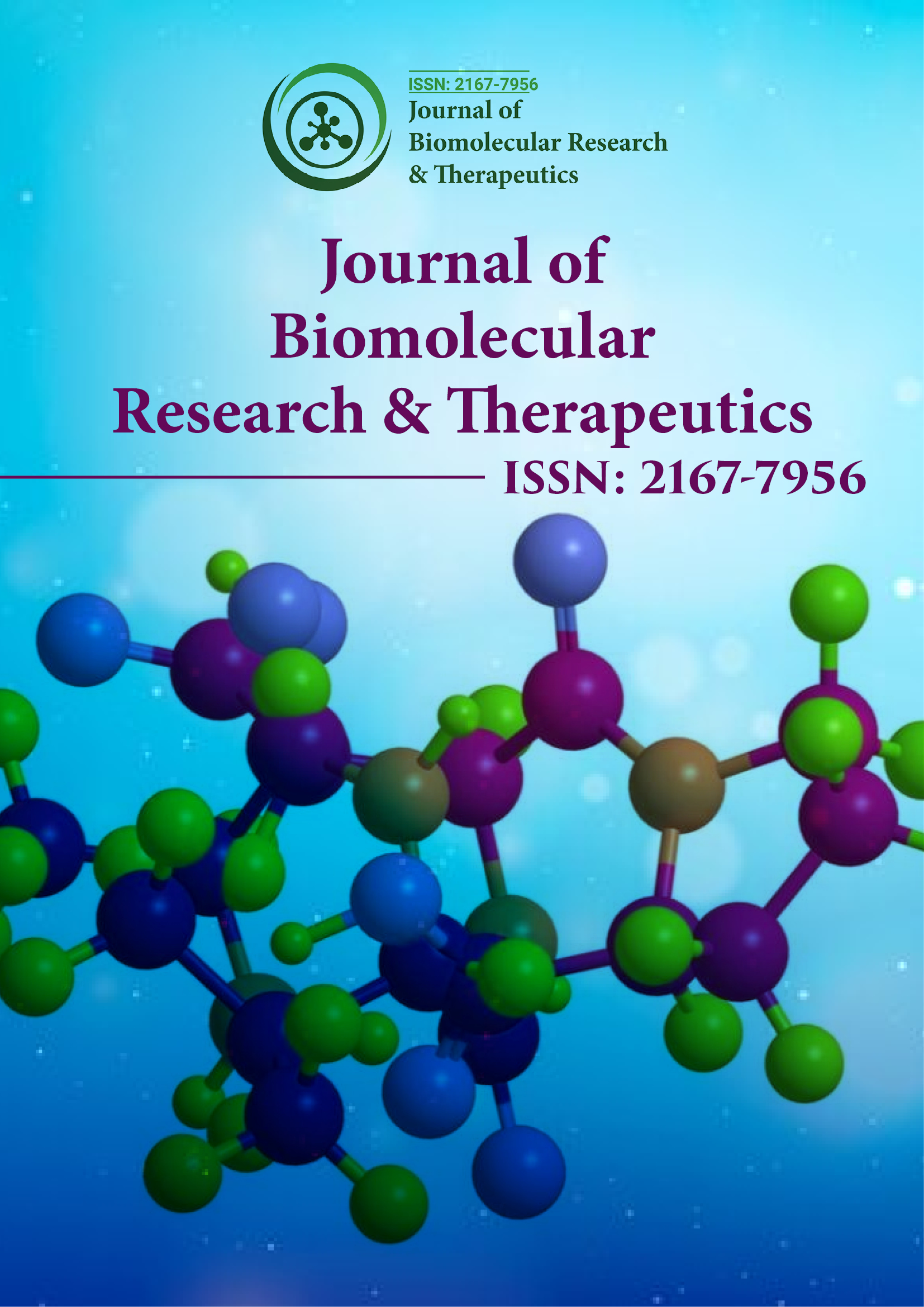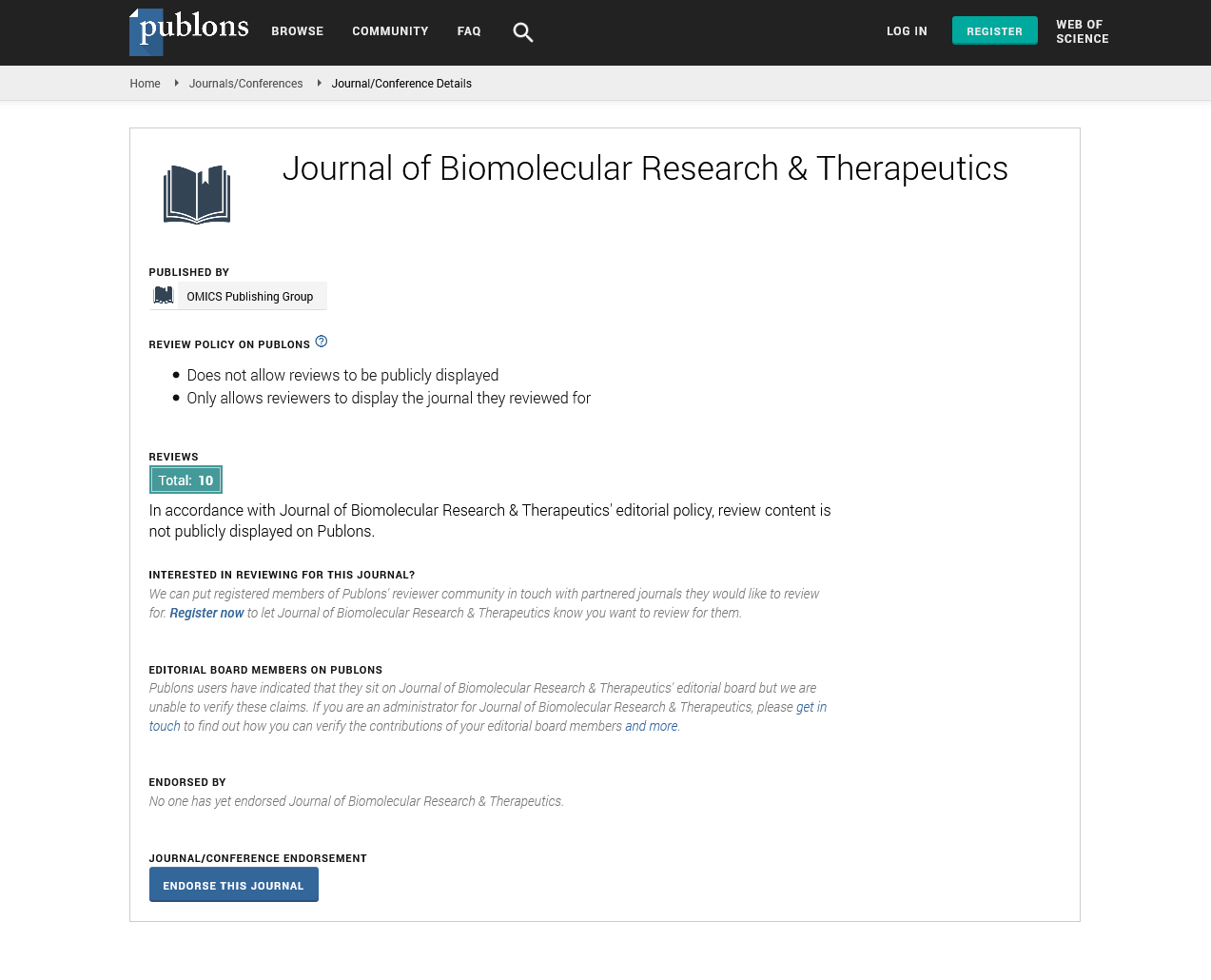PMC/PubMed Indexed Articles
Indexed In
- Open J Gate
- Genamics JournalSeek
- ResearchBible
- Electronic Journals Library
- RefSeek
- Hamdard University
- EBSCO A-Z
- OCLC- WorldCat
- SWB online catalog
- Virtual Library of Biology (vifabio)
- Publons
- Euro Pub
- Google Scholar
Useful Links
Share This Page
Journal Flyer

Open Access Journals
- Agri and Aquaculture
- Biochemistry
- Bioinformatics & Systems Biology
- Business & Management
- Chemistry
- Clinical Sciences
- Engineering
- Food & Nutrition
- General Science
- Genetics & Molecular Biology
- Immunology & Microbiology
- Medical Sciences
- Neuroscience & Psychology
- Nursing & Health Care
- Pharmaceutical Sciences
Opinion Article - (2024) Volume 13, Issue 1
Simplifying Bio-Molecular Interactions: Bridging Theory and Practice
Alena Molen*Received: 29-Jan-2024, Manuscript No. BOM-24-25308; Editor assigned: 31-Jan-2024, Pre QC No. BOM-24-25308 (PQ); Reviewed: 14-Feb-2024, QC No. BOM-24-25308; Revised: 21-Feb-2024, Manuscript No. BOM-24-25308 (R); Published: 28-Feb-2024, DOI: 10.35248/2167-7956.23.13.370
Description
Bio-molecular interactions serve as the foundational elements driving a myriad of biological processes, including the binding of proteins to Deoxy Ribonucleic Acid (DNA) and the recognition of antigens by antibodies. Mastery of these interactions is paramount for unraveling the intricate mechanisms governing cellular functions and disease pathways. The exploration of biomolecular interactions encapsulates the journey scientists undertake to decipher these intricate processes, applying their insights to practical applications.
Fundamentally, bio-molecular interactions involve the recognition and binding of molecules such as proteins, nucleic acids, carbohydrates, and lipids. These interactions are administered by a various of factors, including electrostatic forces, hydrogen bonding, hydrophobic interactions, and van der Waals forces. Theoretical models, such as molecular docking simulations and molecular dynamics simulations, provide valuable insights into the structural features and energetics of these interactions. By conceptually predicting the binding affinities and modes of interaction between biomolecules, researchers can explain the underlying principles driving molecular recognition events.
Translating theoretical knowledge into practical applications is a multifaceted process that encompasses various experimental techniques and methodologies. One of the primary tools used to study bio-molecular interactions is spectroscopy, which enables researchers to probe the structural and dynamic properties of biomolecules in solution. Techniques such as Nuclear Magnetic Resonance (NMR) spectroscopy, X-ray crystallography, and cryo-electron microscopy provide atomic-level insights into the three dimensional structures of bio-molecular complexes, illuminate on their modes of interaction and conformational changes.
Furthermore, biophysical techniques such as Surface Plasmon Resonance (SPR) and Isothermal Titration Calorimetry (ITC) offer quantitative measurements of binding kinetics, affinity constants, and thermodynamic parameters associated with biomolecular interactions. These methods play a fundamental role in characterizing the specificity, strength, and dynamics of molecular recognition events, providing essential information for drug discovery, protein engineering, and molecular diagnostics.
The study of bio-molecular interactions extends beyond the nation of basic research and finds diverse applications in various fields. In drug discovery and development, understanding the interaction between drug molecules and their target proteins is significant for rational drug design and optimization. By exploiting the binding modes and affinity profiles of drug candidates, researchers can identify lead compounds with enhanced potency, selectivity, and pharmacokinetic properties, thereby accelerating the development of novel therapeutics for the treatment of diseases.
Moreover, bio-molecular interactions play a fundamental role in the field of biotechnology, where they are employed for a wide range of applications, including protein purification, biosensors, and biomaterials engineering. Immobilizing biomolecules onto solid supports or surfaces allows for the selective capture and detection of target analyses, enabling the development of sensitive and specific diagnostic assays for medical diagnostics, food safety, and environmental monitoring.
In conclusion, Insert title as Bimolecular Interactions the interdisciplinary journey of understanding and applying the principles of molecular recognition in diverse scientific endeavors. From theoretical models and computational simulations to experimental techniques and practical applications, the study of bio-molecular interactions continues to reveal the life and drive innovation in fields ranging from medicine and biotechnology to materials science. Through a symbiotic relationship between theory and practice, researchers are elucidating the intricacies of bio-molecular interactions, enabling groundbreaking advancements in medicine, biotechnology, materials science, and beyond.
Citation: Molen A (2024) Simplifying Bio-Molecular Interactions: Bridging Theory and Practice. J Biomol Res Ther. 13:370.
Copyright: © 2024 Molen A. This is an open-access article distributed under the terms of the Creative Commons Attribution License, which permits unrestricted use, distribution, and reproduction in any medium, provided the original author and source are credited.

